Advanced Placement Psychology
Enterprise High School, Redding, CA
All terms from Myers Psychology for AP (BFW Worth, 2011)
| 7756969572 | biological psychologists | the scientific study of the links between biological and psychological processes. |  | 0 |
| 7756969573 | neuron | a nerve cell; the basic building block of the nervous system. |  | 1 |
| 7756969574 | dendrites | the bushy, branching extensions of a neuron that receive messages and conduct impulses toward the cell body. |  | 2 |
| 7756969575 | axon | the neuron extension that passes and electrical messages through its branches to other neurons or to muscles or glands. |  | 3 |
| 7756969576 | myelin sheath | a layer of fatty tissue segmentally encasing the fibers of many neurons; enables vastly greater transmission speed of neural impulses as the impulse hops from one node to the next. |  | 4 |
| 7756969577 | action potential | a neural impulse; a brief electrical charge that travels down an axon. |  | 5 |
| 7756969578 | refractory period | a period of inactivity after a neuron has fired. |  | 6 |
| 7756969579 | threshold | the level of stimulation required to trigger a neural impulse. |  | 7 |
| 7756969580 | all-or-nothing response | a neuron's reaction of either firing or not firing. |  | 8 |
| 7756969581 | synapse | the junction between the axon tip of the sending neuron and the dendrite or cell body of the receiving neuron. The tiny gap at this junction is called the synaptic gap or synaptic cleft. |  | 9 |
| 7756969582 | neurotransmitters | chemical messengers that cross the synaptic gaps between neurons. When released by the sending neuron, they travel across the synapse and bind to receptor sites on the receiving neuron, thereby influencing whether that neuron will generate a neural impulse. |  | 10 |
| 7756969583 | reuptake | a neurotransmitter's reabsorption by the sending neuron. |  | 11 |
| 7756969584 | endorphins | "morphine within"—natural, opiate-like neurotransmitters linked to pain control and to pleasure. |  | 12 |
| 7756969585 | Agonist | A chemical that mimics the action of a neurotransmitter. |  | 13 |
| 7756969586 | Antagonists | Chemical substances that block or reduce a cell's response to the action of other chemicals or neurotransmitters. | 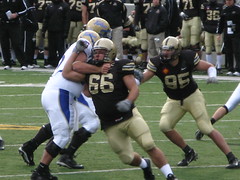 | 14 |
| 7756969587 | nervous system | the body's speedy, electrochemical communication network, consisting of all the nerve cells of the peripheral and central nervous systems. |  | 15 |
| 7756969588 | Central nervous system (CNS) | the brain and the spinal cord | 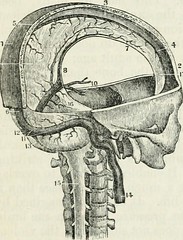 | 16 |
| 7756969589 | Peripheral nervous system (PNS) | the sensory and motor neurons that connect the central nervous system to the rest of the body |  | 17 |
| 7756969590 | nerves | bundled axons that form neural "cables" connecting the central nervous system with muscles, glands, and sense organs. |  | 18 |
| 7756969591 | sensory (afferent) neurons | neurons that carry incoming information from the sensory receptors to the brain and spinal cord. |  | 19 |
| 7756969592 | motor (efferant) neurons | neurons that carry outgoing information from the brain and spinal cord to the muscles and glands. |  | 20 |
| 7756969593 | interneurons | neurons within the brain and spinal cord that communicate internally and intervene between the sensory inputs and motor outputs. |  | 21 |
| 7756969594 | Somatic nervous system | the division of the peripheral nervous system that controls the body's skeletal muscles (skeletal nervous system) |  | 22 |
| 7756969595 | Autonomic nervous system | the part of the peripheral nervous system that controls the glands and the muscles of the internal organs. It's sympathetic system arouses and parasympathetic calms. |  | 23 |
| 7756969596 | Sympathetic nervous system | the division of the autonomic nervous system that arouses the body, mobilizing its energy in stressful situations. (If you get scared) | 24 | |
| 7756969597 | Parasympathetic nervous system | the division of the autonomic nervous system that calms the body, conserving its energy (Your PARents come home and calm you down) | 25 | |
| 7756969598 | Reflexes | simple, automatic responses to sensory stimuli, such as the knee-jerk response |  | 26 |
| 7756969599 | Endocrine system | the body's "slow" chemical communication system; a set of glands that secrete hormones into the bloodstream |  | 27 |
| 7756969600 | Hormones | chemical messengers that are manufactured by the endocrine glands, travel through the bloodstream, and affect other tissues |  | 28 |
| 7756969601 | Adrenal glands | a pair of endocrine glands that sit just above the kidneys and secrete hormones (epinephrine and norepinephrine) that help arouse the body in times of stress |  | 29 |
| 7756969602 | Pituitary gland | "THE MASTER GLAND" the endocrine system's most influential gland under the influence of the hypothalamus, the pituitary regulates growth and controls other endocrine glands |  | 30 |
| 7756969603 | Lesion | tissue destruction. It can occur naturally or experimentally by the caused distruction/remove of brain tissues | 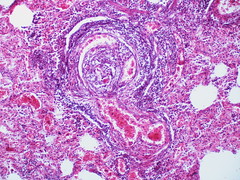 | 31 |
| 7756969604 | Electroencephalogram (EEG) | An amplified recording of the waves of electrical activity that sweep across the brain's surface. These waves are measured by electrodes placed on the scalp. |  | 32 |
| 7756969605 | CT (computed tomography) scan | a series of x-ray photographs taken from different angles and combined by computer into a composite representaion of a slice through the body. Aslo called a CAT scan | 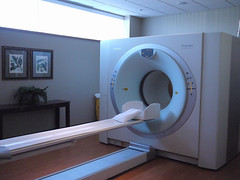 | 33 |
| 7756969606 | (PET) Positron emission tomography scan | A visual display of brain activity that detects where a radioactive form of glucose goes while the brain performs a given task. |  | 34 |
| 7756969607 | MRI (magnetic resonance imaging) | a TECHNIQUE THAT USES MAGNETIC FIELDS AND RADIO WAVES TO PRODUCE COMPUTER generated images that distinguish among different types of soft tissues. |  | 35 |
| 7756969608 | fMRI (functional MRI) | A technique for revealing bloodflow and, therefore, brain activity by comparing successive MRI scans. fMRI scans show brain function. |  | 36 |
| 7756969609 | Brainstem | the oldest part and central core of brain. AKA reticular formation, or reticular activating system. In charge of automatic survival functions |  | 37 |
| 7756969610 | Medualla | The base of the brainstem. Controls heartbeat and breathing. |  | 38 |
| 7756969611 | Pons | sleep and arousal |  | 39 |
| 7756969612 | Thalamus | the brains 'sensory switch board' Located at top of brainstem; directs messages to the sensory areas and transmits them to cerebellum and medulla. |  | 40 |
| 7756969613 | Reticular Formation | Plays an important role in controlling arousal. |  | 41 |
| 7756969614 | Cerebellum | "little brain" at the rear of the brainstem; functions including processing sensory input, coordinating movement output and balance, and enabling nonverbal learning and memory. |  | 42 |
| 7756969615 | Limbic system | A system of neural structures at the border of brainstem. Associated with emotions like fear, agression, and drives such as those for food and sex. Includes the Hippocampus, Amygdala and hypothalamus. |  | 43 |
| 7756969616 | Amygdala | 2Lima bean sized neural clusters in the limbic system, linked to emotion. Includes rage and fear. |  | 44 |
| 7756969617 | Hippocampus | Limbic system. Learning and memory matcher. |  | 45 |
| 7756969618 | hypothalamous | A neural structure lying below the thalamus, it directs several maintenance activities (eating, drinking, body temperature) helps govern the endocrine system via the pituitary gland, and is linked to emotion and reward. |  | 46 |
| 7756969619 | Cerebral cortex | Fabric of interconnected neuron cells. Higher order thinking. Takes meaning and puts it to focus. The body's ultimate control and information-processing center. |  | 47 |
| 7756969620 | Glial Cells | Cells in the nervous system that support, nourish, and protect neurons. |  | 48 |
| 7756969621 | Frontal Lobes | the portion of the cerebral cortex lying just behind the forehead; involved in speaking and muscle movements and in making plans and judgements. |  | 49 |
| 7756969622 | Parietal lobes | The portion of the cerebral cortex lying at the top of the head and toward the rear; includes the sensory cortex. Receives sensory input for touch and body position. |  | 50 |
| 7756969623 | Occipital lobes | the portion of the cerebral cortex lying at the back of the head; includes the visual areas, which receive visual info from the opposite visual feild. |  | 51 |
| 7756969624 | Temporal lobes | The portion of the cerebral cortex lying roughyl above the ears; includes the auditory areas, each of which revieves aditory info primarily from the opposite end. |  | 52 |
| 7756969625 | motor cortex | an area at the rear of the frontal lobes that controls voluntary movements. |  | 53 |
| 7756969626 | somatosensory cortex | the area at the front of the parietal lobes that registers and processes body touch and movement sensations. |  | 54 |
| 7756969627 | association areas | areas of the cerebral cortex that are not involved in primary motor or sensory functions; rather, they are involved in higher mental functions such as learning, remembering, thinking, and speaking | 55 | |
| 7756969628 | Plasticity | The brain's ability to change, especially during childhood, by reorganizing after damage or by building new pathways based on experience. |  | 56 |
| 7756969629 | Neurogenesis | Formation of new neurons |  | 57 |
| 7756969630 | Corpus Callosum | Large band of neural fibers connecting the two brain hemispheres and carrying messages between them. |  | 58 |
| 7756969631 | Split Brain | A conditioning resulting from surgery that isolates the brain's two hemispheres by cutting the fibers connecting them. |  | 59 |
| 7756969632 | Consciousness | our awareness of ourselves and our environment. |  | 60 |
| 7756969633 | Cognitive Neuroscience | The interdisciplinary study of the brain activity linked with cognition. (including perception, thinking, memory and language.) |  | 61 |
| 7756969634 | Dual Processing | a phenomenon can occur in two different ways, or as a result of two different processes, The principle that information is often simultaneously processed on separate conscious and unconscious tracks |  | 62 |
| 7756969635 | behavior genetics | the study of the relative power and limits of genetic and environmental influences on behavior |  | 63 |
| 7756969636 | environment | every nongenetic influence, from prenatal nutrition to the people and things around us, Every nongenetic influence, from prenatal nutrition to the people and things around us. |  | 64 |
| 7756969637 | chromosomes | threadlike structure made of DNA molecules that contain the genes |  | 65 |
| 7756969638 | DNA (deoxyribonucleic acid) . | (deoxyribonucleic acid) a complex molecule containing the genetic information that makes up the chromosomes |  | 66 |
| 7756969639 | genes | the biochemical units of heredity that make up the chromosomes; segments of DNA capable of synthesizing a protein |  | 67 |
| 7756969640 | genome | the complete instructions for making an organism, consisting of all the genetic material in that organism's chromosomes |  | 68 |
| 7756969641 | identical twins (monozygotic) | twins who develop from a single fertilized egg that splits in two, creating two genetically identical organisms |  | 69 |
| 7756969642 | fraternal twins (dizygotic) | twins who develop from separate fertilized eggs; no genetically closer than brothers and sisters, but they share a fetal environment |  | 70 |
| 7756969643 | molecular geneticists | subfield of biology that study the molecular structure and function of genes |  | 71 |
| 7756969644 | heritability | the proportion of variation among individuals that we can attribute to genes; this may vary depending on population range and the environment being studied |  | 72 |
| 7756969645 | interaction | the interplay that occurs when the effect of one factor (such as environment) depends on another factor (such as heredity) |  | 73 |
| 7756969646 | epigenetics | The study of environmental influences on gene expression that occur without a DNA change. |  | 74 |
| 7756969647 | evolutionary psychologists | The study of the evolution of behavior and the mind, using principles of natural selection. | 75 | |
| 7756969648 | natural selection | the principle that, among range of inherited trait variations, those that lead to increased reproduction and survival will most likely be passed on to succeeding generations | 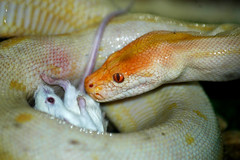 | 76 |
| 7756969649 | mutations | A random error in gene replication that leads to a change |  | 77 |

